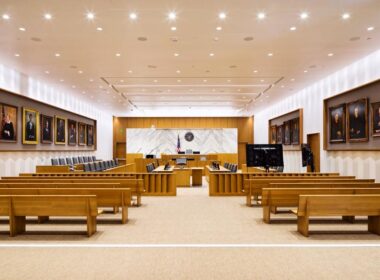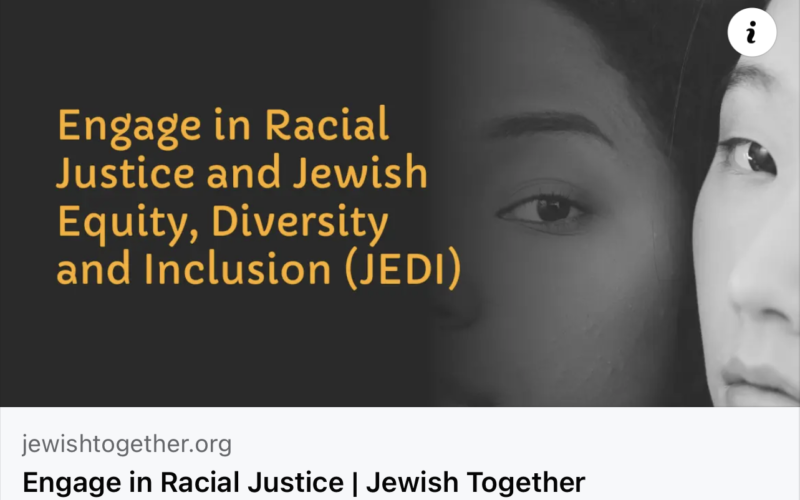Despite the news being mostly negative when it comes to censorship online, another trend towards free speech online has taken hold. Dozens of courts across the country, including at least 4 circuit courts, have determined that you DO have First Amendment rights when responding to the social media posts of public officials at any level of government, from school board members to United States Presidents. See Garnier v. O’Connor-Ratcliff, 41 F.4th 1158, 1179 (9th Cir. 2022); Davison v. Randall, 912 F.3d 666, 687 (4th Cir. 2019); Knight First Amend. Inst. v. Trump, 928 F.3d 226, 234-36 (2d Cir. 2019) (overturned on other grounds); Robinson v. Hunt County., 921 F.3d 440 (5th Cir. 2019).
Many opponents of freedom of speech will tell you that you do NOT have First Amendment rights online. Censors point to 10 words in the First Amendment that “Congress shall make no law … abridging the freedom of speech…” From this text they extrapolate that the First Amendment must be a limiting principle that restricts your right to enjoy free speech to only very rare circumstances.
But this narrow view is akin to looking at a forest and seeing only a single tree. If those 10 words were sufficient to describe our rights, the Supreme Court would not have written thousands of pages across hundreds of cases grappling to interpret their meaning.
In expounding the principles underlying the First Amendment, the Supreme Court explains that “speech concerning public affairs is more than self-expression; it is the essence of self-government.” Garrison v. Louisiana, 379 U.S. 64, 74-75 (1964). Speech on public issues “has always rested on the highest rung of the hierarchy of First Amendment values.” Carey v. Brown, 447 U. S. 455, 467 (1980). A democratic people must be able to freely “generate, debate, and discuss both general and specific ideas, hopes, and experiences.” Barr v. Am. Ass’n of Political Consultants, 140 S. Ct. 2335, 2358 (2020). The First Amendment, by protecting the “marketplace” and the “transmission” of ideas, thereby helps to protect the basic workings of democracy itself. See Meyer v. Grant, 486 U. S. 414, 421 (1988) (“The First Amendment was ‘fashioned to assure unfettered interchange of ideas for the bringing about of political and social changes desired by the people’”).
The Bill of Rights were pre existing rights already due to citizens at common law which the Framers used to inscribe their Enlightenment, Roman and Greek philosophy with Constitutional muster. The First Amendment cannot be reduced to a few words, instead, it can only be viewed in the context of this inheritance, which in the English tradition traces at least back to the Magna Carta’s acknowledgment in 1215 that citizens have the right to petition their leaders with grievances without fear of retaliation. The Framers did not themselves experience or predict concerns of censorship by modern corporate conglomerates, tech companies and even non-profits, and if they had, they might have chosen different text to better preserve our rights. Some states, such as California, put text in their state Constitutions that offer even greater protection for Freedom of Speech than the First Amendment. Congress has the capability to pass laws that increase Freedom of Speech. The First Amendment is a floor, not a ceiling.
The First Amendment is a floor, not a ceiling. Our duty to advocate expanding our civil rights continues.
Our duty to advocate expanding our civil rights continues. How do you think our rights should be interpreted online? Over five years ago, the Supreme Court recognized social media as the “modern public square.” Packingham v. North Carolina, 137 S.Ct. 1730, 1732 (2017). Our rights cannot be limited, like some may argue, unless you stop advocating for them. Instead, they continue to evolve. The rights enshrined in the First Amendment, due to the nature of our common law, are dynamic and in constant change. Courts continue to reinterpret their meaning in light of new times, facts and technology. As public debate shifted online, so has new law developed over the last few years recognizing how the First Amendment works on social media.
Ending with a thought from the Supreme Court, in striking down a blanket ban on access to social media, explained that social media is “to what for many are the principal sources for knowing current events, checking ads for employment, speaking and listening in the modern public square, and otherwise exploring the vast realms of human thought and knowledge. These websites can provide perhaps the most powerful mechanisms available to a private citizen to make his or her voice heard. They allow a person with an Internet connection to become a town crier with a voice that resonates farther than it could from any soapbox. In sum, to foreclose access to social media altogether is to prevent the user from engaging in the legitimate exercise of First Amendment rights.” Packingham, 137 S.Ct. at 1737.






Thank you for your sharing. I am worried that I lack creative ideas. It is your article that makes me full of hope. Thank you. But, I have a question, can you help me?
Thank you for your sharing. I am worried that I lack creative ideas. It is your article that makes me full of hope. Thank you. But, I have a question, can you help me?
Your article helped me a lot, is there any more related content? Thanks!
Your article helped me a lot, is there any more related content? Thanks! https://accounts.binance.com/ES_la/register-person?ref=T7KCZASX
Thank you for your sharing. I am worried that I lack creative ideas. It is your article that makes me full of hope. Thank you. But, I have a question, can you help me?
Thank you for your sharing. I am worried that I lack creative ideas. It is your article that makes me full of hope. Thank you. But, I have a question, can you help me?
Thanks for sharing. I read many of your blog posts, cool, your blog is very good.
I don’t think the title of your article matches the content lol. Just kidding, mainly because I had some doubts after reading the article.
Your point of view caught my eye and was very interesting. Thanks. I have a question for you.
Your article helped me a lot, is there any more related content? Thanks!
Thanks for sharing. I read many of your blog posts, cool, your blog is very good.
Can you be more specific about the content of your article? After reading it, I still have some doubts. Hope you can help me. https://accounts.binance.com/fr-AF/register-person?ref=JHQQKNKN
Thanks for sharing. I read many of your blog posts, cool, your blog is very good.
Can you be more specific about the content of your article? After reading it, I still have some doubts. Hope you can help me.
Your article helped me a lot, is there any more related content? Thanks!
Thank you for your sharing. I am worried that I lack creative ideas. It is your article that makes me full of hope. Thank you. But, I have a question, can you help me?
I don’t think the title of your article matches the content lol. Just kidding, mainly because I had some doubts after reading the article.
Can you be more specific about the content of your article? After reading it, I still have some doubts. Hope you can help me. https://accounts.binance.com/register?ref=P9L9FQKY
Your point of view caught my eye and was very interesting. Thanks. I have a question for you. https://accounts.binance.com/es-AR/register-person?ref=UT2YTZSU
Your article helped me a lot, is there any more related content? Thanks!
Your article helped me a lot, is there any more related content? Thanks!